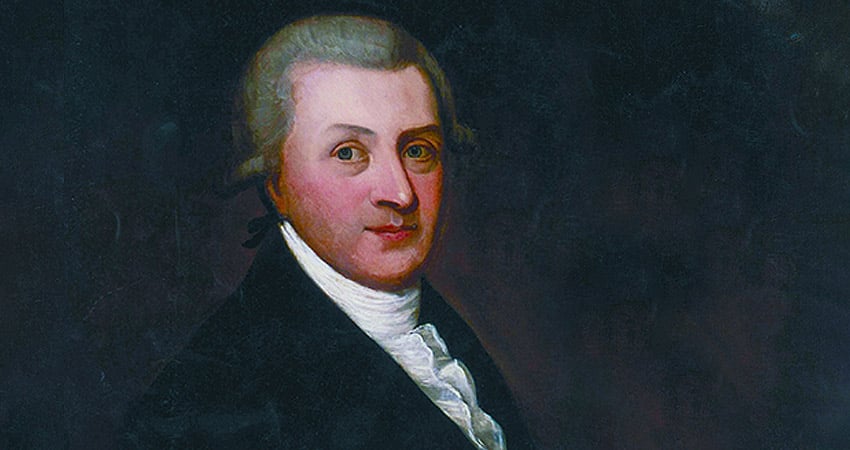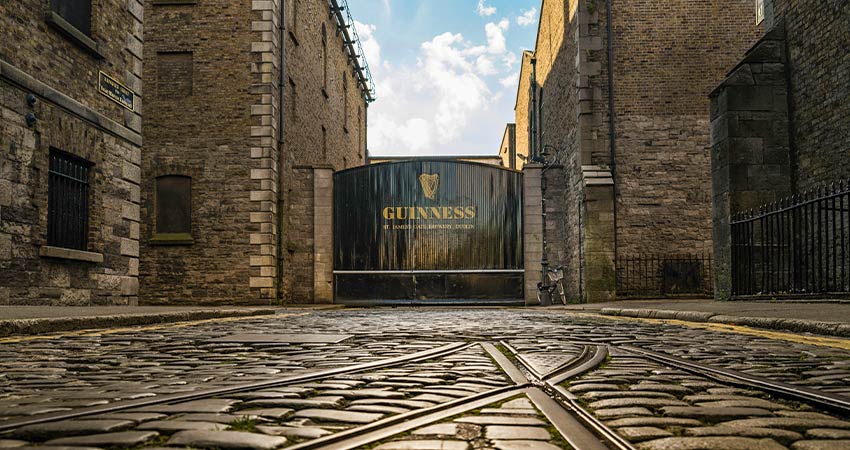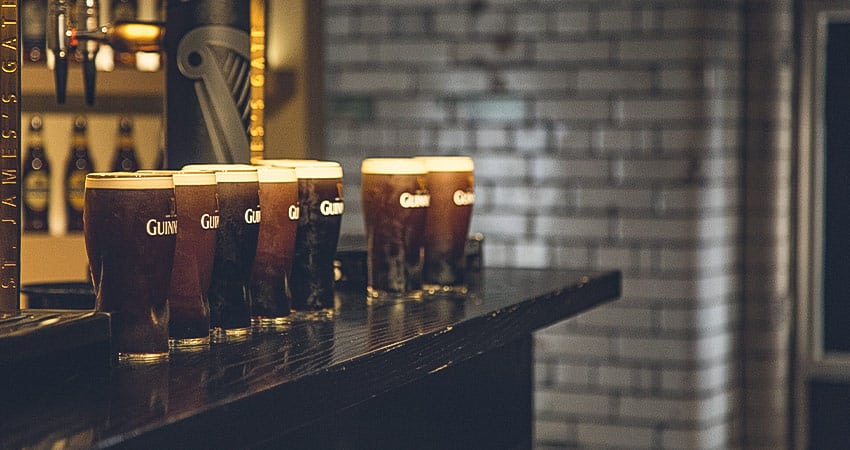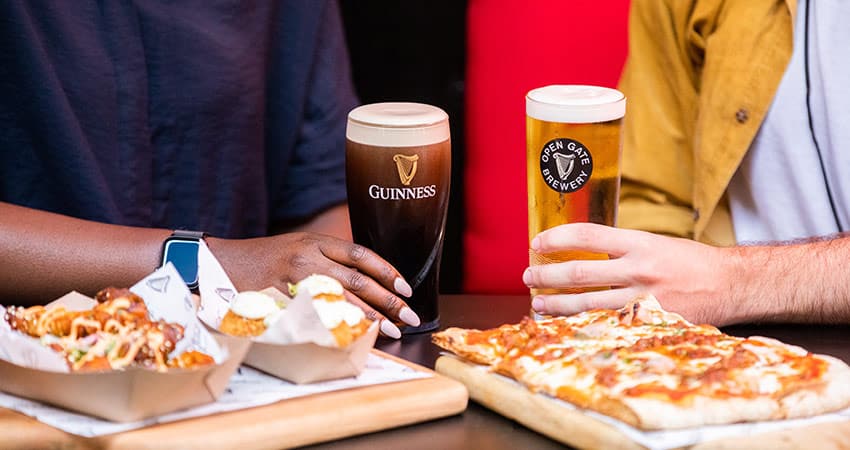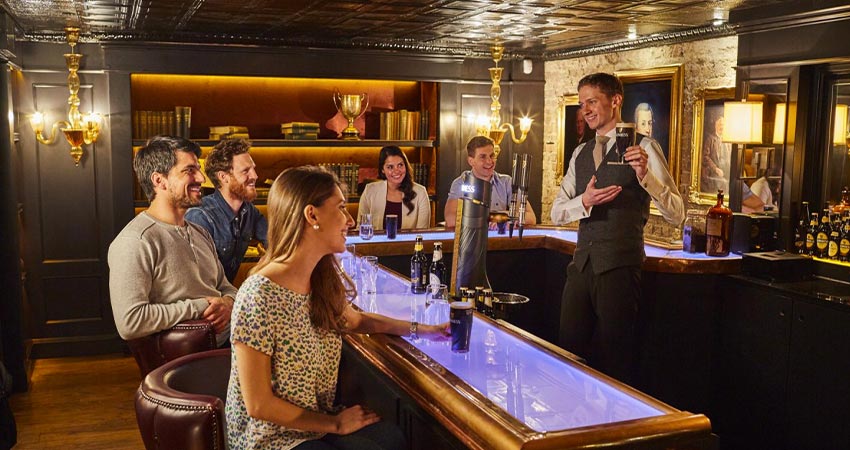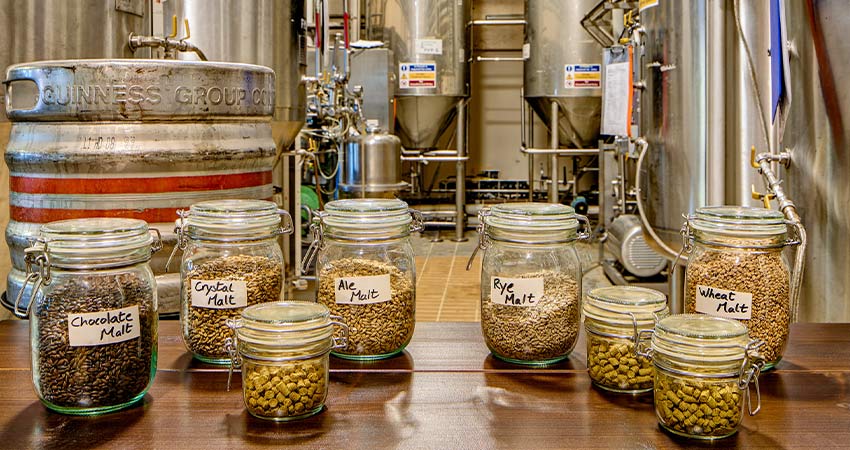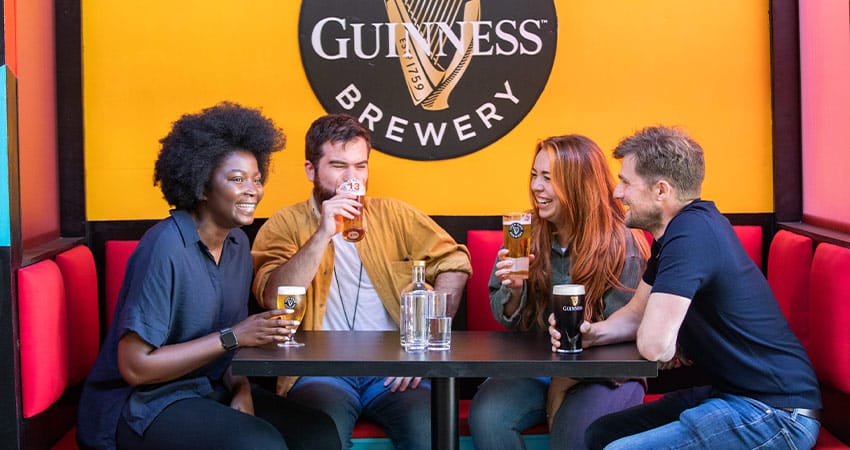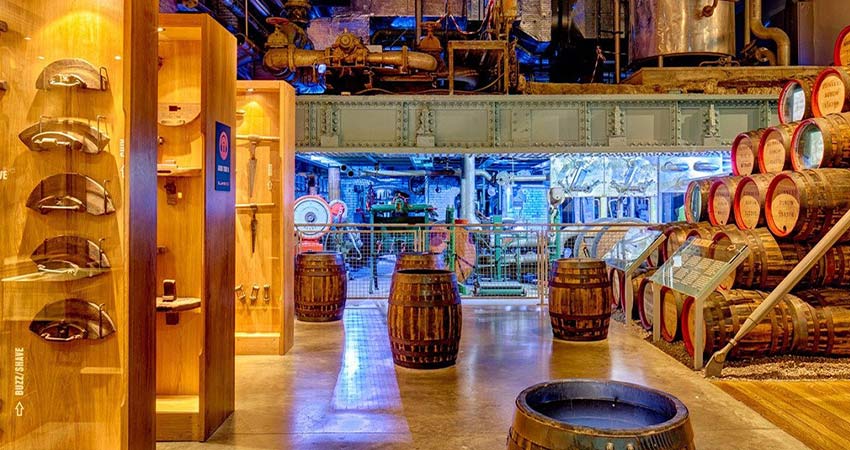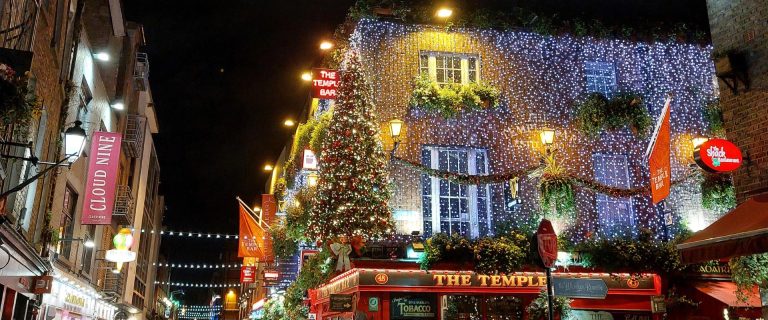The folks who love Guinness Stout are legion and it’s no wonder. Ireland’s hearty brew is sold in more than 150 countries. And, in those far flung places, 10 million glasses are poured and enjoyed each day. Read on! The story of Guinness is as intriguing as the ale itself.
In the Beginning
Arthur Guinness was 34 years old in 1759 when he leased Dublin’s St. James Gate Brewery. Situated on four acres, the brewery was shut down and in disrepair. He received a favorable price: a 9,000-year lease with an annual rent of £45. After ten years of hard and innovative work, the brewery was thriving, and Arthur was importing his brew to England.
Porter was a new style of English beer, and Guinness started brewing it in the 1770’s. Made using roasted barley, it had a distinctive flavor, rich scent, and it was a beautiful dark-ruby color. With sales going well, in 1799 Arthur dropped ale and put his considerable talents into brewing porter. Upon Arthur’s death in 1803, his son, Arthur II, took over a very successful enterprise.
The Extraordinary Guinness Family
Guinness was passed down through five generations. No infighting or feuds, each successive member applied their particular abilities to growing the business. The last member of the family that hold the title of Chairman was Benjamin Guinness; he held that position until 1986. The family’s long legacy is almost miraculous. The members, in order of generation, are:
- Arthur Guinness II inherited the brewery, expanded it, and Guinness became the largest brewery in Ireland. He increased exports, and in the 1820’s shipments went to such varied places as Portugal, the United States, the Caribbean, and Africa. He also created Extra Superior Porter. It was stronger, and it is still brewed today. You’ll find it sold as Guinness Extra Stout or Guinness Original.
- When Benjamin Lee Guinness took over, he designed the trademarked label for Guinness stout. His trademark featured Arthur Guinness’s original signature, a harp, and the word GUINNESS. He became Lord Mayor of Dublin in 1851 and generously contributed to the restoration project of St. Patrick’s Cathedral.
- Upon Benjamin’s death in 1868, his son Edward became Chairman. Under Edward’s direction, Guinness became the largest brewery in the world. It was traded on the London Stock Exchange, and by the end of the 19th century, sales of stout were 1.2 million barrels/year and the brewery stood on 60 acres. The facility had its own railway and fire department. In fact, it was a miniature town within the city of Dublin.
- Benjamin hired men to travel throughout the world to see how their overseas products were doing, thus assuring high quality wherever Guinness was sold. He established a trust to provide clean affordable housing for Dublin’s working classes. The brewery’s employees were some of the most highly paid workers, including excellent benefits, in the city.
- Rupert Guinness became Chairman of Guinness, following his father’s death in 1927. A Guinness Brewery was built in London and Rupert launched an enthusiastic marketing campaign. In 1951, Guinness Exports Limited was created to bottle, market, and distribute Guinness overseas. New brewing equipment was installed. For the first time Guinness was distributed to bars in draft form, producing its creamy head.
- Benjamin Guinness followed his father in 1962 and held the position of Chairman until 1986. Breweries were located in London, Nigeria, Malaysia, and Cameroon. By the end of the 20th century, Guinness was sold in over 150 countries and brewed in 49 countries.
The Marketing Genius of Guinness
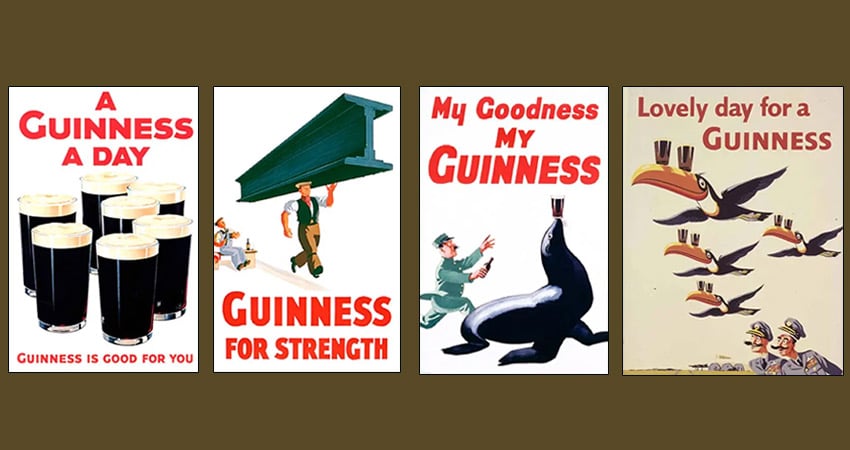
In the 1930’s, Guinness designed advertising campaigns that were unparalleled in the industry. The message was simple—people felt great after downing a pint. Their most famous motto, “Guinness is good for you,” was created by award-winning English crime writer, Dorothy L. Sayers. Posters were designed that included phrases such as, “Guinness for Strength”, “Lovely Day for a Guinness”, “Guinness Makes you Strong”, and “My Goodness my Guinness!”
Guinness collectors search for original posters today. They images include distinctive art with animals, including a kangaroo, an ostrich, seal, lion and, most often, a toucan. The jungle toucan says, “Toucans in their nests agree/ Guinness is good for you/ Try some today and see/ What one Toucan can do!” The animals were often shown outwitting a zookeeper. They were catchy and fun; the intent was to appeal to the crowd who didn’t want to drink cheap lagers.
Today, Guinness still wins top awards for their innovative advertising.
Guinness is a Favorite Around the World
More than one-quarter of all beer sold in Ireland is Guinness. In the 21st century, sales took off in India. 40% of all beer sold in Africa is Guinness. The ruby-rich ale is brewed under license in Nigeria, the Bahamas, Canada, Cameroon, Kenya, Uganda, South Korea, Namibia, and Indonesia. In 2017, distribution began in China, which is the largest worldwide market for alcoholic beverages. The UK is the only nation that consumes more Guinness than Ireland. Ireland is followed by Nigeria and the United States.
Debunking The Myths
Many styles of Guinness are not higher in alcohol than other beers. An average beer of the same style contains 5% Alcohol By Volume. Guinness comes in at 4.2% ABV. Because Guinness is creamy and rich, plus dark in color, most people assume it is high in calories. In fact, a 12-ounce serving of Guinness is 125 calories. Bud Light clocks in at 110… So, enjoy your Guinness!
The Process, Taste, and Serving
Unique in brewing, Guinness is both pasteurized and filtered. Until the late 1950’s it was racked in wooden casks. At that time they created a metal keg, called “the iron lungs.” Guinness is an excellent choice for vegans and vegetarians—no animal products, such as isinglass, are used for settling material in the vat.
The biggest change in the Guinness process occurred in 1959 when Guinness began using nitrogen. Nitrogen bubbles are smaller than carbon dioxide, and it gives the stout a creamier texture and taste. When Guinness was put in cans, a “widget”, which is a small plastic ball of nitrogen, was placed inside each can, creating a creamy head.
The perfect pint of Guinness draft is the product of a double pour. According to the company, this pour should take 119.53 seconds. Guinness, that Master of Marketing, has promoted this as, “Good things come to those who wait.” (Yes, they are still marketing masters.)
What is Guinness Made With?
Guinness is a stout made from water, barley, roast malt extract, hops, and brewer’s yeast. Some of the barley is roasted, giving Guinness its rich color and unique flavor.
The Varieties Found in the USA
Foreign Extra Stout and Special Export Stout, with Alcohol By Volume of 7.5% and 9%, are the closest to the original in character and taste.
Guinness Draught is the standard draft beer. It is sold in kegs and in widget cans and bottles. The alcoholic content is 4.1 to 4.3 %.
Guinness Foreign Extra Stout is 7.5% ABV in Europe, Africa, the Caribbean, Asia, and the USA. The Guinness wort extract is shipped directly from Dublin.
Guinness Special Export Stout, the first to be pasteurized, comes in at 8% alcohol.
Guinness Blonde is a lager brewed in Latrobe, Pennsylvania. It is a combination of Guinness yeast and American ingredients.
One of the most advanced, and environmentally sustainable, breweries in the world, Guinness Brewhouse 4 is state-of-the-art. And it is still located in Dublin at St. James Gate. Using more than 100,000 tons of Irish barley each year, it contributes mightily to Ireland’s economy. When in Dublin, taste their beautiful stout and feel better than good!
When you visit Ireland, ask your Authentic Destination Expert to put a visit to Guinness on your list.
 My Trips
My Trips 


